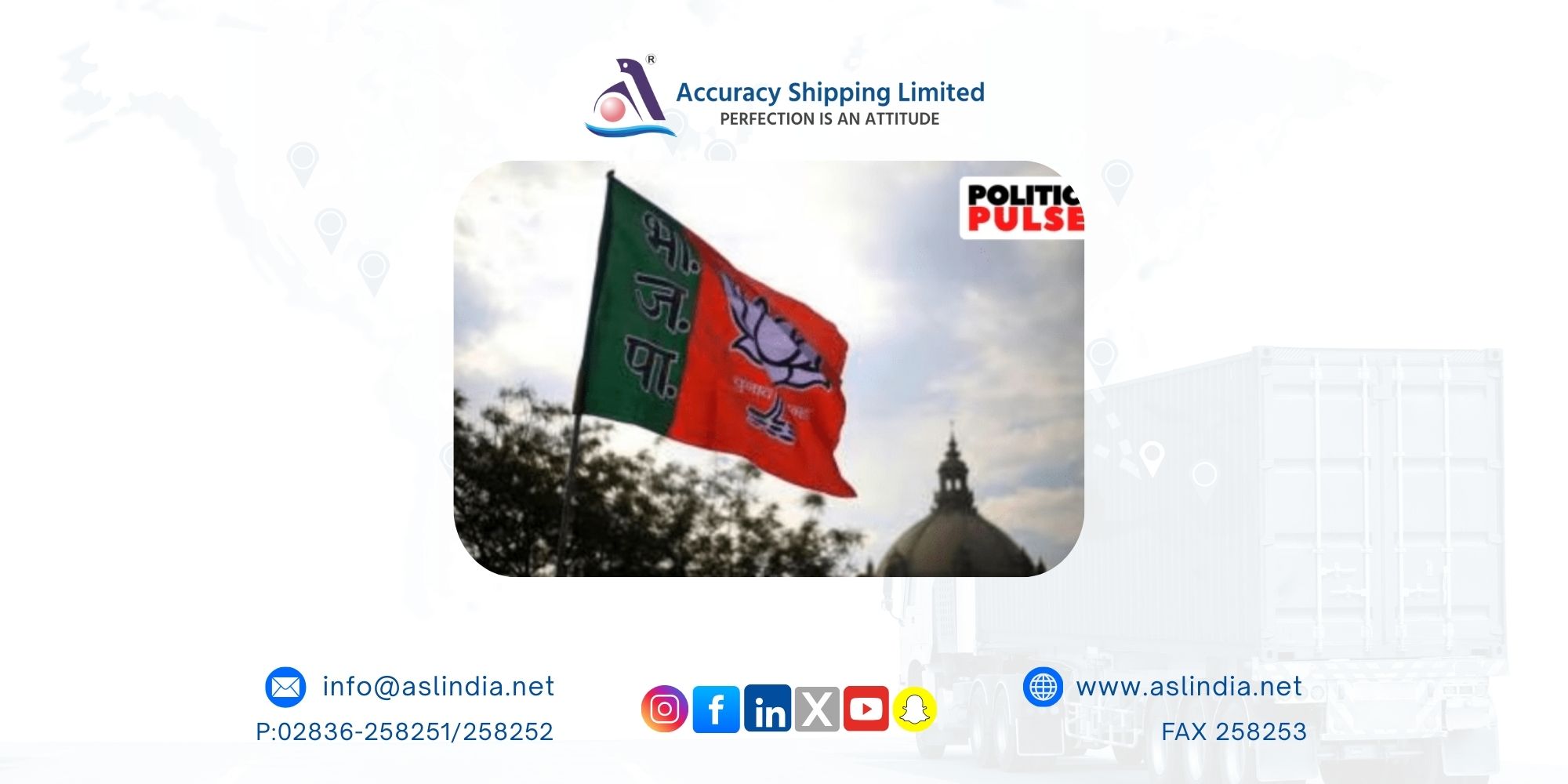Amid language row, a look at how BJP brass tilted to Hindi, shed English after Vajpayee era

In recent years, a clear linguistic shift has taken root within the Bharatiya Janata Party (BJP). As the party consolidates its dominance across the Hindi heartland, a marked departure from the anglicised leadership of the Vajpayee era is becoming increasingly evident. Today, the BJP brass is predominantly Hindi-speaking, both at the Centre and in the states it governs, mirroring a broader political and cultural realignment.
This change is especially significant against the backdrop of recurring debates over “Hindi imposition” in non-Hindi-speaking states. Take, for example, the recent joint press conference in Chennai on April 11, where Union Home Minister Amit Shah announced the BJP-AIADMK alliance for the 2026 Tamil Nadu Assembly elections. Shah, whose mother tongue is Gujarati, delivered his address entirely in Hindi — undeterred by the DMK’s accusations of cultural centralisation and linguistic bias through the National Education Policy’s three-language formula.
But for Shah and Prime Minister Narendra Modi, also a native Gujarati speaker, Hindi has long been their default language in public discourse — whether in Parliament, rallies, or national addresses. This preference is not an isolated trend but a broader shift that has swept through the party’s upper echelons over the last decade.
From Bilingual Eloquence to Regional Resonance
In the Atal Bihari Vajpayee–L K Advani era, the BJP's leadership circle was fluent in both English and Hindi. Leaders such as Vajpayee, Advani, Arun Jaitley, Sushma Swaraj, Jaswant Singh, and Yashwant Sinha wielded English with finesse, often appealing to urban India and the educated elite. Their bilingual (often multilingual) prowess symbolised an era where the party sought to bridge the gap between India’s anglicised elite and its Hindi-speaking majority.
Today, that bridge is no longer seen as necessary. “The last decade marked a period when the masses became wary of the anglicised elite that was in a commanding social position since the times of Jawaharlal Nehru,” a BJP leader observed. “They have begun to see people like themselves, rather than the anglicised elite, as their leaders.”
The Rise of the Hindi Heartland
The BJP’s growing cultural alignment with its base in North and Central India has catalysed this linguistic pivot. In these regions, which have consistently delivered strong electoral mandates to the BJP, Hindi is the primary medium of communication. As a result, most BJP Chief Ministers — Yogi Adityanath (UP), Bhajanlal Sharma (Rajasthan), Mohan Yadav (MP), Pushkar Singh Dhami (Uttarakhand), Nayab Singh Saini (Haryana), Vishnu Deo Sai (Chhattisgarh), Bhupendra Patel (Gujarat), and Mohan Majhi (Odisha) — communicate almost exclusively in Hindi or regional languages.
Only a few exceptions remain. Maharashtra CM Devendra Fadnavis and Assam CM Himanta Biswa Sarma are among the rare BJP leaders who frequently use English in public discourse.
In the Union Cabinet, the English-speaking contingent largely comprises former bureaucrats, corporate professionals, and political dynasts — such as Nirmala Sitharaman, S Jaishankar, Ashwini Vaishnaw, Hardeep Singh Puri, Jyotiraditya Scindia, Piyush Goyal, and J P Nadda. Still, the public-facing rhetoric of the BJP today remains overwhelmingly Hindi-centric.
A Cultural and Social Realignment
The shift to Hindi also reflects deeper social transformations within the BJP. “There was a time when our top leaders came from the upper castes. Now, our leadership substantially belongs to the OBCs,” another party leader pointed out. “This has made the BJP resemble a son-of-the-soil party more than ever before.” The linguistic tilt is thus not merely strategic — it’s a cultural realignment with the party’s evolving voter base.
The linguistic strategy is also helping the BJP outpace rivals in the North. Parties like the SP in Uttar Pradesh and the RJD in Bihar have long maintained Hindi as their primary medium. Akhilesh Yadav, despite his Western education, communicates solely in Hindi. So does Tejashwi Yadav, along with his political rival and BJP ally Nitish Kumar. The BJP’s smaller allies — Jayant Chaudhary, Anupriya Patel, and Chirag Paswan — may be bilingual, but the dominant tone across the heartland remains rooted in Hindi.
Contrast with the Congress
Ironically, while the BJP is becoming more like regional parties in its linguistic orientation, the Congress is veering in the opposite direction. The Congress’s current leadership, aside from the Gandhi family, is increasingly based in non-Hindi regions. Leader of the Opposition Rahul Gandhi may speak Hindi publicly, but much of the party’s voice in Parliament comes from MPs like K K Venugopal, Gaurav Gogoi, Shashi Tharoor, and Mallikarjun Kharge — all hailing from the South or East India, and more comfortable in English.
This contrast, BJP insiders argue, is working to their advantage. “The BJP’s increasing Hindi tilt works for the party well in North and Central India, which have the Hindi-speaking voters,” a leader noted.
Conclusion
What was once a bilingual party seeking to appeal across linguistic lines is now firmly rooted in the linguistic identity of its largest voter base. As the BJP continues to ride its dominance across the Hindi belt, its shift toward Hindi appears not only deliberate but deeply effective. In a country marked by diversity, this embrace of linguistic majoritarianism has set a new tone — not just for the BJP, but for the future of Indian political communication itself.







